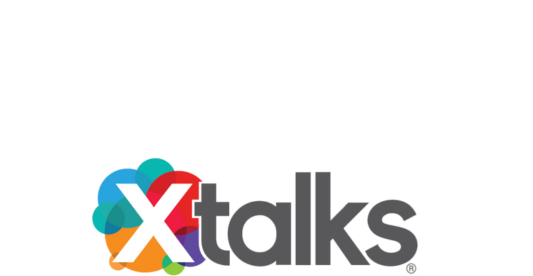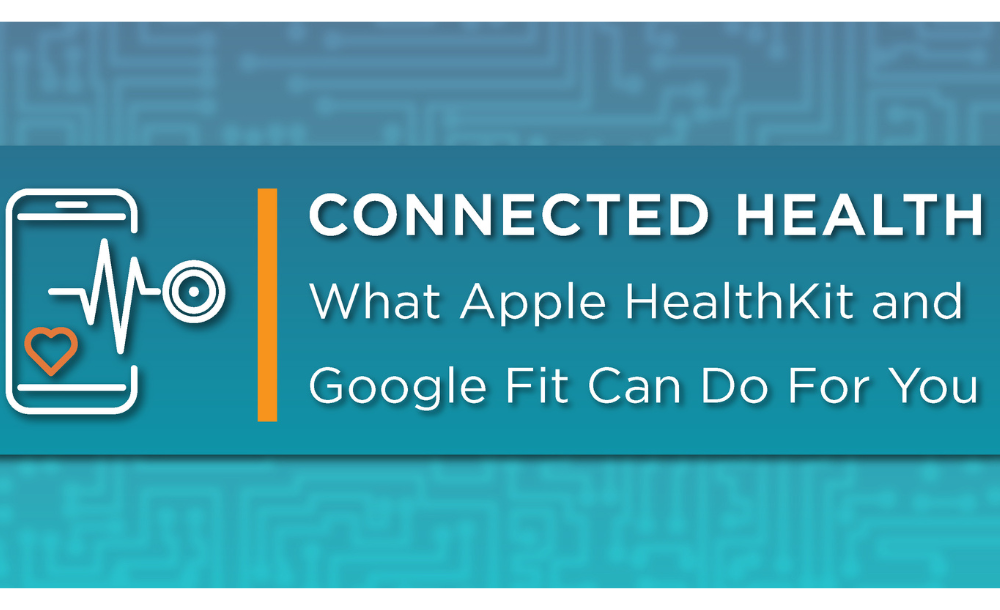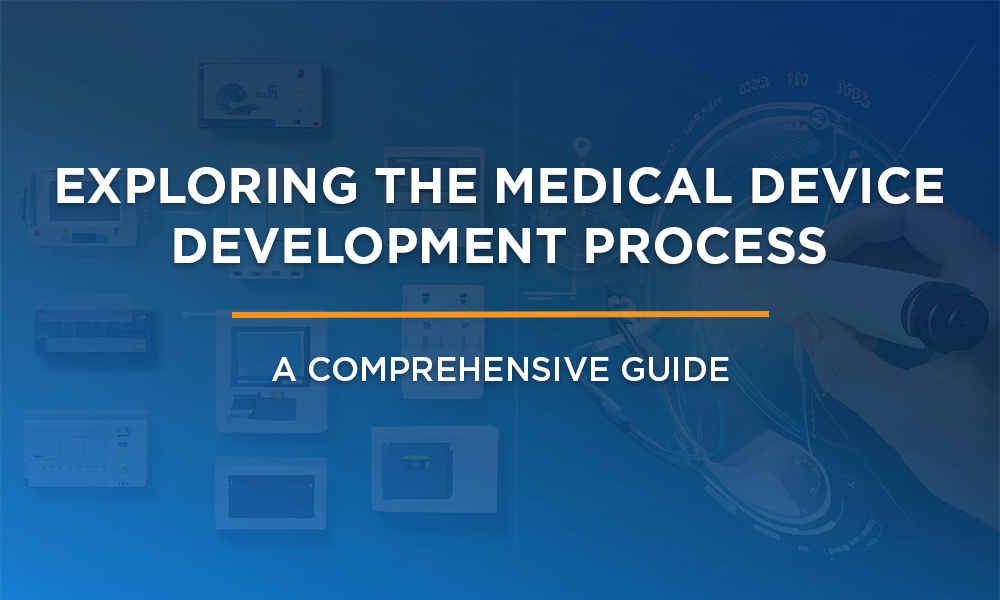Understanding how your data will interoperate is one of many considerations when architecting and designing an optimal connected health medical device solution.
At the most basic level, both Apple HealthKit and Google Fit provide for the aggregation of connected health data from numerous sources and present the end user with a single holistic view of the user’s health information. These platforms also serve another very important purpose of enabling data interoperability by standardizing the syntax (how the data is structured) and semantics (what the data means) of data sets associated with a specific health measurement.
Normalizing the semantics is a great benefit to the overall industry since all users of a platform agree to the same meaning of the underlying data. This is needed for doing a meaningful analysis of the data. For example, even a simple word like “Sleep”, which may mean something very different to different people, will mean the same thing for all applications that use a platform that has defined the word “Sleep”. For example, sleep analysis data is stored as a categorical variable in both Apple HealthKit and Google Fit differently. In Apple HealthKit, the allowed values are “In Bed”, “Asleep”, and “Awake” while in Google Fit, the allowed values are “Sleep”, “Awake”, “Light Sleep”, “Deep Sleep”, and “REM Sleep”. When implementing either platform, extreme care should be taken in making sure that the data model (syntax and semantics) is followed to prevent incorrect information from being used by the end-user which may also potentially be harmful.
While Apple and Google created these platforms to help address the interoperability of health data within their operating systems, using one or the other does not necessarily force you into an Apple or Google only solution. For a cross-platform solution needing the same user experience across both iOS and Android, we successfully implemented a hybrid approach using the supplied platforms augmented by custom code.
Apple HealthKit
HealthKit can be thought of as a central repository for storing health information in iOS which can be viewed using the Apple Health app. HealthKit allows apps to securely read and write health data while respecting the user’s privacy. The user is also provided with granular control over the use of their data such as which apps can read or write which data. For example, a fitness app can be authorized to write certain fitness-related data to HealthKit while another healthcare management app can be authorized to read the data from HealthKit to provide suggestions to the user. The Health App also provides the ability to visualize, add, or edit data stored in HealthKit. It should be noted that Apple does not provide any APIs to access or store HealthKit data through a cloud service. The data used by HealthKit resides only on the user’s device.
When considering HealthKit, one should review the latest Apple App Store guidelines for specific restrictions. For example, the September 2018 Apple’s App Store review guidelines state that apps are not permitted to use data in HealthKit for marketing, advertising, or use-based data mining other than in cases for improving health management or research and then only with the permission of the user.
Google Fit
Google Fit addresses more than data interoperability and looks at the workflow of sensing, collecting, and tracking data. Similar to Apple HealthKit, Google Fit also has robust security and privacy model. The data is presented to the user using the Google Fit app which is similar in purpose to the Apple Health app, providing the user similar granular control of the uses of the data. The broader scope does not mean, however, that Google Fit is applicable for all use cases. According to the latest Google Fit Terms and Conditions (September 2018), “Google does not intend Google Fit to be a medical device. You may not use Google Fit in connection with any product or service that may qualify as a medical device pursuant to Section 201(h) of the Federal Food Drug & Cosmetic (FD&C) Act.” In positioning its platform, Google seems to be addressing more personal fitness monitoring as opposed to all aspects of personal health or illness monitoring. While the Google Fit API supports the storage of a number of health measurements (e.g. oxygen saturation, menstrual flow), the Google Fit app currently only displays activity, weight, and blood pressure. It should be noted however that the Google Fit API supports limited medical data types. For example, it presently supports blood glucose and body temperature but not insulin delivery. Unlike the Apple Health app, the Google Fit app does not allow the user to edit individual data points. However, the user may choose to delete all data of a particular type.
In contrast to Apple HealthKit, Google Fit provides several mechanisms to extend the use of the data beyond the user’s device, all natively within the Google Fit platform. For example, Google Fit provides a communication mechanism that allows developers to use Google Fit APIs to send and retrieve data from a device or app to a central cloud-based repository called the Google Fitness Store. Transmitting to a cloud service is also possible using Apple HealthKit but it would require an app to read the data from Apple HealthKit and transmit this information to the cloud service. Note that this must still comply with Apple App Guidelines as noted previously. Another communication mechanism offered by Google is a Google Fit REST API which enables authenticated access to store and retrieve data from sources other than Android devices such as iOS devices, and web or PC applications. Using the REST API, applications can read and write to data stored on the Google Fitness Store cloud service. With regards to assisting sensing on Android, the Google Fit API also provides support for collecting data from Bluetooth Low Energy sensors that implement a standard protocol (GATT profile) as defined by the Bluetooth SIG. This flexibility may be needed by certain systems to implement the latest standard protocols.
How we can help
Understanding how your data will interoperate is one of many considerations when architecting and designing an optimal connected medical device solution. While platforms like Apple HealthKit and Google Fit facilitate certain aspects of a deployment, the use of these platforms still needs to be a part of an overall product strategy. Jointly working with our clients, we help to develop a robust product strategy, make the right technology decisions and deliver a production-ready scalable solution. Having also successfully developed applications that comply with FDA, CE, and other global regulations, we can design a solution that complies with the regulatory strategy set out for your product.
If you are interested in connected medical devices, Contact Us. We’re excited to hear your ideas and discuss our development expertise.
FAQ’s
1. What are Apple HealthKit and Google Fit?
- Both are platforms that aggregate health data from various sources and present it to the user in a central location.
- They also standardize how health data is formatted (syntax) and interpreted (semantics) to improve compatibility between different apps and devices.
2. What are the benefits of standardized health data?
- Easier analysis of health data from different sources.
- Ensures everyone using the platform understands the data in the same way.
- Example: Sleep data might be categorized as “In Bed,” “Asleep,” and “Awake” in Apple HealthKit, but “Sleep,” “Awake,” “Light Sleep,” “Deep Sleep,” and “REM Sleep” in Google Fit. Understanding these differences is crucial for accurate data interpretation.
3. Can I use both Apple HealthKit and Google Fit together?
- Yes, Sunrise Labs has successfully implemented a hybrid approach using both platforms with custom code for a cross-platform health solution.
4. Key points about Apple HealthKit:
- Stores health data on the user’s device only (no cloud storage).
- Offers granular user privacy controls over which apps can access health data.
- Focuses on health data management within the iOS ecosystem.
- Restricted use of data for marketing or advertising purposes.
5. Key points about Google Fit:
- Offers a broader scope than just data interoperability, including data collection and tracking.
- Stores data in a central cloud-based repository called Google Fitness Store (optional).
- Primarily designed for personal fitness monitoring, not intended as a medical device.
- Allows limited storage of some medical data types (blood glucose, body temperature).
- Provides APIs for data exchange with other apps and devices beyond Android.
- Supports collecting data from Bluetooth Low Energy sensors using a standardized protocol.
6. How can Sunrise Labs help with connected health solutions?
- Assists in developing a product strategy that considers data interoperability and regulatory compliance.
- Helps choose the right technology platform (HealthKit, Google Fit, or hybrid approach) based on your needs.
- Designs and delivers scalable connected health solutions that meet your specific requirements.
- Offers expertise in developing solutions compliant with FDA, CE, and other global regulations.







